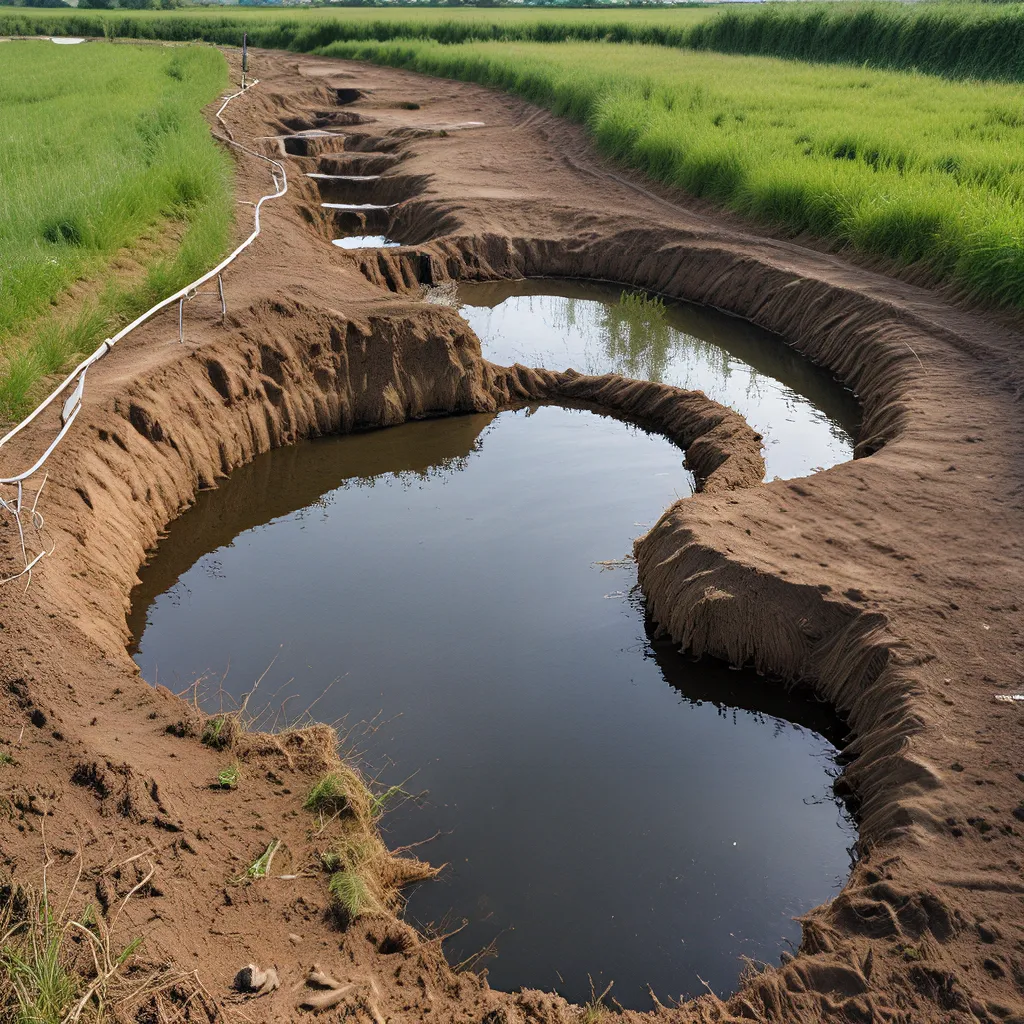
As a self-proclaimed eco-warrior, I’ve always been fascinated by the world of wastewater treatment and how it intersects with the emerging concept of the circular bioeconomy. It’s a topic that’s been bubbling away in the scientific and policy realms, and I’m excited to dive in and share my insights with you.
Unlocking the Potential of Organic Waste
You know, it’s really quite remarkable when you think about it. The very waste we so often see as a burden – the sludge, the effluent, the byproducts of our daily lives – actually holds immense potential. Thanks to advancements in wastewater treatment technologies, we’re now able to extract valuable bioproducts and bioenergy from these organic materials.
Just imagine – instead of simply disposing of all that waste, we can transform it into renewable fuels, chemicals, and even bioplastics. It’s a bit like turning straw into gold, if you’ll forgive the analogy. And the best part? It’s all part of this growing circular bioeconomy that’s reshaping how we think about waste management and sustainability.
Embracing the Circular Bioeconomy
The circular bioeconomy is this fascinating concept that’s really gained traction in recent years. It’s all about minimizing waste and maximizing the value we can extract from biological resources. And when it comes to wastewater treatment, there’s a huge opportunity to be part of this sustainable revolution.
According to the U.S. government, the circular bioeconomy is all about “the production, utilization, and circulation of biological resources to provide goods and services.” In the context of wastewater, that means taking those organic materials that were once seen as trash and turning them into valuable bioproducts and bioenergy.
It’s a win-win situation, really. Not only do we reduce the amount of waste ending up in landfills or being incinerated, but we also create new revenue streams and sustainable solutions that benefit both the environment and the economy. And let me tell you, the potential is absolutely mind-boggling.
Bioproducts: Turning Wastewater into Wonder
One of the most exciting aspects of this circular bioeconomy approach to wastewater treatment is the production of bioproducts. These are the renewable, biodegradable materials that can be extracted from organic waste streams and used for all sorts of applications.
Researchers are constantly exploring new ways to harness the power of these wastewater-derived bioproducts. Think bioplastics that can replace traditional petroleum-based plastics, biochemicals that can be used in a variety of industries, and even biofertilizers that can enrich our soils.
It’s a real renaissance in the world of waste management, and I can’t help but get giddy thinking about all the possibilities. Imagine a future where our wastewater treatment facilities aren’t just places to clean up dirty water, but rather biorefineries churning out innovative, sustainable products. It’s a future that’s well within our grasp, and it’s all thanks to the power of the circular bioeconomy.
Bioenergy: Powering the Future with Wastewater
But the wonders of wastewater don’t stop at bioproducts. Oh no, my friends – we’ve also got the incredible potential of bioenergy to explore. That’s right, the very same organic materials that can be turned into bioplastics and biochemicals can also be used to generate clean, renewable energy.
Through processes like anaerobic digestion and biogas production, wastewater treatment plants are now able to harness the energy stored in things like sewage sludge and food waste. And the best part? This bioenergy can be used to power the very same treatment facilities, making them more self-sufficient and sustainable than ever before.
It’s a bit like a perpetual motion machine, if you think about it. We take the waste, we extract the energy, and then we use that energy to power the next round of waste processing. It’s a closed-loop system that’s as efficient as it is eco-friendly. And let me tell you, the potential for scaling up these bioenergy solutions is absolutely staggering.
Overcoming Challenges and Embracing the Future
Of course, as with any emerging technology or paradigm shift, there are challenges to overcome. The integration of bioproducts and bioenergy into the existing wastewater treatment infrastructure can be complex, and there are regulatory hurdles to navigate. There’s also the matter of public perception – convincing people that the stuff we flush down the drain can actually be turned into valuable, sustainable resources.
But I’m optimistic that we’re up to the task. With continued research, innovation, and policy support, I believe we can unlock the full potential of the circular bioeconomy in the wastewater sector. And who knows – maybe one day, we’ll even see wastewater treatment facilities that are entirely self-sustaining, producing more energy and bioproducts than they consume.
It’s an exciting time, my friends, and I can’t wait to see what the future holds. So let’s embrace the power of wastewater and the circular bioeconomy, and work together to build a more sustainable, resource-efficient future. After all, the potential is there – we just have to have the vision to seize it.